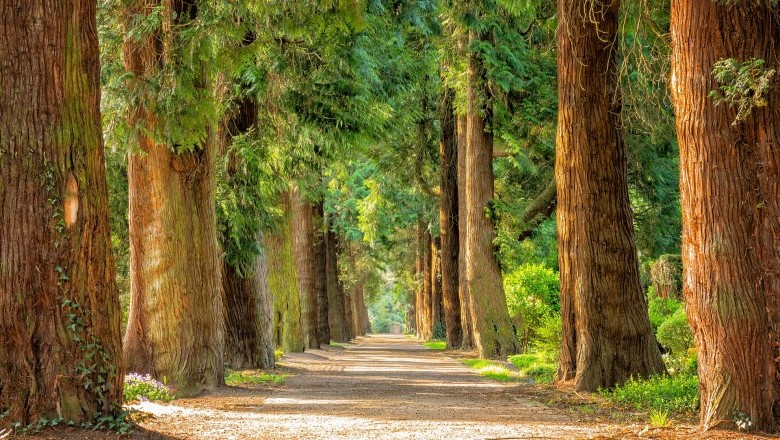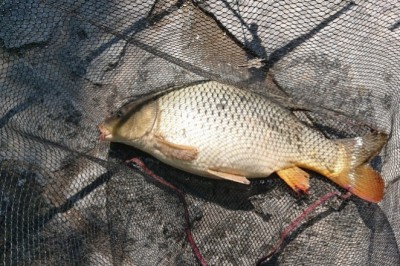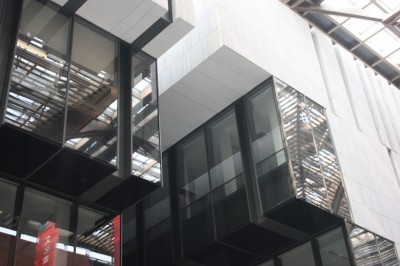
Facts About Wood & Trees
For several years, I have complied facts on wood and trees. Here are 77 that I will share with you. I add to and update it frequently. Some are pretty astounding.
* The most recently discovered tree specie is the Wollemi Pine, {Wollemia nobilis}. It was discovered in September 1994, by, a New South Wales National Parks officer named David Noble in a secluded area in the Blue Mountains of the Wollemi National Park, approximately 124 miles west of Sydney Australia. The total count of the wild mature trees is fewer than a hundred. The largest one is a little over 131 foot tall and a little short of 4 foot in diameter. The species is from the Araucariaceae family of conifers which are around 200 million years old, one of the oldest on earth.
In October of 2005, 292 five year old, 6 foot 6 inch to almost 10 foot tall cultivated Wollemi Pine trees from the Royal Botanic Gardens in Sydney Australia, were auctioned off by Sothebys Auction House, selling from $2000 - $7000 each, with one bidder paying $115,000 for a set of trees. The auction took in $1.17 million.
Sometime in the spring of 2006, Wollemi Pine trees ranging in height from 16 inches to a little under 5 foot will be available to the general public at reasonable prices through retail outlets.
* It is not uncommon for a Pohutukaw, New Zealand Christmas tree {Metrosiderosis excelsa} to have multiple trunks. An ancient Pohutukaw named Te Waha O Rerekohu, is growing on the grounds of the Te Waha O Rerekohu School in Te Araroa that has 22 trunks! It is approximately 65 foot tall and is over 600 years old.
* Balsa {Ochroma pyramidale} is the lightest and softest commercially sold wood in the world. Its average specific gravity averages .16. Note: There are 4 other woods that are lighter, but none of them are suitable for any purpose. They are extremely weak and are not actually anything like wood as far as looks, feel and texture.
* The heaviest and the hardest wood in the world is Snakewood {Piratinera guianensis}. Its specific gravity averages 1.30.
* The worlds largest, recorded harvested burl was a Redwood {Sequoia sempervirens}, located near Big Lagoon in Humboldt County, California in 1944. It was approximately 105 foot in circumference {over 33 foot in diameter}, nine feet tall at the crown and weighed 60 tons. Seven redwoods up to six foot in diameter were growing out of it. It took four men about a month to harvest and make it into veneer stock.
* Not all species of wood floats in water. In order to sink in water the specific gravity of the wood, has to be 1.00 or more. The 28 below sink.
African Blackwood - {Dalbergia melanoxylon}
Billian - {Eusideroxylon zwageri}
Black Ironwood - {Olea laurifolia}
Brazil Ironwood - Caesalpinia ferrea}
Brazilwood - {Caesalpinia echinata}
Burma Ironwood - {Xylia xylocarpa}
Ceylon Ironwood - {Mesua ferrea}
CocoBolo Rosewood - {Dalbergia retusa}
Desert Ironwood - {Olneya tesota}
East Indian Satinwood, Ceylon - {Chloroxylon swietenia}
Ebony - {Diospyrus crassiflora}
Ekki - {Lophira alata}
Greenheart - {Ocotea rodiaei}
IPE - {Tabebuia serratifolia}
Kingwood Rosewood - {Dalbergia cearensis}
Knobthorn - {Acacia nigrescens}
Leadwood - {Krugiodendron ferreum}
Lignum Vitae - {Guaiacum officinale}
Macassar Ebony - {Diospyros celebica}
Marblewood - {Diospyros marmorata}
Mountain Mahogany - {Cercocarpus ledifolius}
Pau dArco - {Tabebuia serratifolia}
Quebracho - {Schinopsis balansae}
Satine, Bloodwood - {Brosimum paraense}
Snakewood - {Piratinera guianensis}
Sucupira - {Bowdichia nitida}
White Topped Box. - {Eucalyptus quadrangulata}
Womara - {Swartzia leiocalycina}
* Bamboo, although often tree like, is actually not a species of tree.
* The whitest wood in the world is Holly {Ilex opaca}. The Silver Striped Holly seems to produce the whitest wood of all the species of Holly. To produce the whitest wood, the best time to cut down Holly tress is in the winter when the sap is lower, and then mill and kiln dry it before summer.
* The blackest wood in the world is Ebony {Diospyros crassiflora}.
* Not all wood that comes from hardwood {flowering} broadleaf trees is hard and wood that comes from softwood {conifers} cone-bearing trees is soft. There are exceptions to this. For instance Balsa {Ochroma pyramidale} and Basswood {Tilia americana} are hardwoods even though they are extremely soft. The southern pines {Pinus strobus} are softwoods but are moderately hard and much harder than Balsa or Basswood.
* Osage Orange {Maclura pomifera} is the species of wood that produces the most heat when burned, approximately 33 million BTUs per 20% air dried moisture content cord. A cord of wood is 4 foot wide x 4 foot high x 8 foot long {128 cubic foot} and has on average 80 cubic foot of burnable wood, the rest is just air space.
* White Oak {Quercus alba} is the species of wood that is easiest to steam bend. With thin stock {1/8 inch or thinner} you can bend it, into an extremely small {tight} radius.
* The name Ironwood is actually a slang term given to the hardest wood of an area, region or country. There are over 80 species of wood in the world, referred to or having the word Ironwood in them.
* The tree with the worlds greatest recorded root depth is a Wild Fig {Ficus natalensis}, located at Echo Caves, close to the town of Ohrigstad, Transvaal, located in South Africa. One of its roots goes down 393 foot 8 3/8 inches.
* The Ombu {Phytolacca dioica} tree, looks like a tree but is actually not a tree specie, it is a bush. It grows in Argentina, Brazil and Uruguay. The Ombu can live with very little water, can survive violent storms, insect attacks and intense heat. Its wood is so moist it will not burn and so spongy the tree can be cut down with a knife. Its trunk can have a diameter of 16 foot and the total overall height can reach 60 foot.
* Palm Sunday was named after the Palm tree {Phoenix dactylifera} because people took branches of Palm trees with them to greet Jesus Christ in Jerusalem {John 12:13}.
* There are 23 names of trees {below} mentioned in the Bible.
The one passage, Isaiah 41:17-20 has seven trees mentioned in it. It reads I will put in the desert the cedar and the acacia, the myrtle and the olive. I will set pines in the wasteland, the fir and the cypress together, so that people may see and know, may consider and understand, that the hand of the LORD has done this, that the Holy One of Israel has created it.
Acacia - {Acacia confusa} - Isaiah 41:17 - 20
Almond - {Amygdalus communis} - Numbers 17:1 - 8
Almug - {Pterocarpus santalinus} - 1 Kings 10:1 - 13
Apple - {Malus communis} - Joel 1:2 - 12
Broom - {Juniperus communis} - Psalm 120:4
Cedar - {Cedrus libani} - 1 Kings 6:1 - 38
Citron - {Ttetraclinis articulata} - Revelation 18:11 - 13
Cypress - {Cupressus macrocarpa} - Isaiah 41:17 - 20
Ebony - {Dalbergia melanoxylon} - Ezekiel 27:12 - 24
Fig - {Ficus carica} - Micah 4:1 - 5
Fir - {Abies cilicia} - Isaiah 41:17 - 20
Myrtle - {Myrtus communis} - Isaiah 41:17 - 20
Oak - {Quercus coccinea} - Ezekiel 27:1 - 9
Olive - {Olea europaea} - Deuteronomy 8:1 - 9
Palm, Edible Date Palm {Phoenix dactylifera} - John 12:13
Pine - {Pinus pinea} - 1 Kings 6:23 - 35
Planetree - {Platanus orientalis} - Genesis 30:25 - 43
Pomegranate - {Punica granatum} - 1 Samuel 14:1 - 3
Poplar - {Populas alba} - Psalm 137:1 - 3
Shittim, Setim - {Acacia seyal} - Exodus 26:15 - 28
Sycamore - {Acer pseudoplatanus} - Luke 19:4 - 6
Terebinth - {Pistacia terebinthus} - Hosea 4:10 - 13
Willow - {Salix safsaf} - Ezekiel 17:1 - 8
* The worlds tallest natural uncut and living Christmas tree is 276 foot. It is a Eucalyptus {Eucalyptus regnansis} located in the Styx Valley, a tract of ancient forest in Tasmania, Australia.
To date, the worlds tallest cut down and decorated Christmas tree was a Fir of 215 foot. It was used to celebrate the Christmas of 1950 in the city of Seattle Washington.
* The worlds shortest tree specie is the Dwarf {Least} Willow {Salix herbacea}. It is rare to find one more than 2 1/2 inches tall. They are also dioecious, producing both male, yellow colored and female, red colored catkins. They have been found growing on frozen tundra in the Arctic.
* The tree specie with the thickest bark is the Redwood {Sequoia gigantean}, its bark can be up to 24 inches thick.
* The tree specie with the thickest bark other than a Redwood {Sequoia gigantea}, is the Coast Douglas Fir tree {Pseudotsuga menziesii}. On the older trees, the bark can be 8 - 12 inches thick.
* The tree specie that produces the largest cones is the Sugar Pine {Pinus lambertiana}, ranging in size from 12 to 24 inches in length and 4 to 5 inches in diameter.
* Lignin is the substance found in wood that helps determine how hard the wood will be. The more Lignin present, the harder the wood and vice versa, the less present, the softer the wood.
* The bark of the Cork Oak {Quercus suber} is used to produce cork wine stoppers). The species grows in Northwest Africa and Southwest Europe with Algeria, Morocco, Portugal and Spain, manufacturing the majority of the worlds supply.
* Up until a few years ago, the worlds oldest living tree, a Bristlecone Pine {Pinus longaeva}, named the Methuselah was located in the Great Basin National Park, California. It is approximately 4,844 years old. It is also the tallest living {55 foot} Bristlecone Pine. Now there may be at least two trees that are older!
With John Whites refined measurement techniques of today {see below}, The Lime {Tilia cordata}, in the Silkwood at Westonbirt Arboretum (Near Tetbury, Gloucester, U.K.) is probably around 6000 years old.
The Fortingall Yew {Taxus baccata}, in Glen Lyon, Perthshire, Scotland, might be as much as 9000 years old. The usual way of calculating a trees age by counting the annual rings in the trunk or by carbon dating, are not accurate when it comes to Yews because a Yews trunk tends to hollow with age, while it continues to grow by rooting its branches and wrapping them around itself. There is even documentation of the formation of aerial roots growing inside the hollow trunk. Another reason are Yews have been known to stop growing for long periods of time, {documented 325 years}, thus having no growth rings for that period.
John Whites method of estimating a trees age is by measuring its trunk circumference approximately 5 feet from ground level. He had access to and studied more than 100,000 tree measurements and multitudes of growth ring patterns from broken or cutoff stumps and concluded that growth rings are closer together on the outside portion of the stump. His technique shows that trees grow at different rates in the three phases of their lifetime, Formative, Middle Age and Senescence (Old Age}. With the evidence he has complied, tables of expected growth, relative to trunk size have been made for numerous common trees.
* There are two types of trees that it is impossible to tell how old they are by counting their growth rings. Trees produce growth rings because of the distinguishable temperature changes that occur over a yearly cycle causing their growth to slow down and speed up.
Trees in certain tropical regions that have a consistent year round climate where growth is ongoing do not form pronounced growth rings. Trees that are endogenous, the majorities of which is some specie of Palm tree {Arecaceae, Palmae or Palm Family), which grow by adding new material inwards, do not produce growth rings.
* In 1964, after his coring tool broke and getting permission from the U.S. Forest Service, a research scientist to get an accurate age measurement cut down a Bristlecone Pine {Pinus longaeva}, in Great Basin National Park, since named Prometheus! It turned out the tree was over 4,950 years old making it older than the Bristlecone Pine named Methuselah, which at the time was 4,803 years old. He had not only found the oldest living thing on the planet, but he had also killed it. A cross-section of the tree is on view at the Great Basin National Parks, visitor center in California.
* The definition {below} of the word tree varies among experts. Actually, the exact number of tree species worldwide is unknown. If we go with definition # 5, there are approximately 2,600. I f we go with definition # 1, there are at least 21,000 and if we go with definition #6, there would be 50,000 to as many as 100,000.
1 A woody plant growing on a single stem usually to a height of over two meters {approximately 6 foot 6 3/4 inches}.
2 A tall perennial woody plant having a main trunk and branches forming a distinct elevated crown; includes both gymnosperms {conifers} and angiosperms {flowering}.
3 A perennial woody plant having a main trunk and usually a distinct crown usually over 10 foot tall.
4 In arboricultural terminology, the definition of tree is a woody plant with one main trunk and a rather distinct and elevated head {crown}. If not altered through human intervention, true trees (such as elm trees) will, by definition, generally reach a height of 15 feet or more.
5 Any perennial woody plant of considerable size (usually over twenty feet high) and growing with a single trunk.
6 A woody perennial plant having a single usually elongate main stem generally with few or no branches on its lower part.
7 A woody plant at least 5 meters {16 foot 4 3/4 inches} high with a main stem the lower part of which is usually unbranched.
8 A very tall plant that is mostly wood, except for its leaves.
9 A tree is a woody plant with a single erect perennial trunk at least 3 inches in diameter at breast height {DBH). Most trees have definitely formed crowns of foliage and attain heights in excess of 13 feet.
10 A tree can be defined as a large, perennial woody plant.
* The worlds largest divided tree leaf to date was growing on a West African Raphia Palm {Raphia vinifera}. When measured, it was approximately 82 foot in length. Note: Only a very small percentage of tree species in the world have divided leaves.
* The tree specie with the largest undivided leaves is the Bigleaf Magnolia {Magnolia macrophylla}. The leaves are 7 to 12 inches wide and 12 to 32 inches long.
* In an article written in 2004 and featured in the weekly magazine Nature, it states that theoretically, the tallest possible height that any tree could obtain is 400-425 foot. This is because of gravity and the friction between water and the vessels of the tree through which it flows.
* In 1872, trained forester William Ferguson, reported a fallen Eucalyptus Tree (Eucalyptus regnans), which was 18 feet in diameter and 435 feet long thus making it the tallest (or longest) tree ever found.
* The worlds tallest living standing tree, a Redwood {Sequoia gigantea}, is in Humboldt State Redwood Park California. Last measured in 2005, it was 370 foot 2 inches {37 stories} tall, or approximately 5 stories higher than the Statue of Liberty.
* The worlds tallest living standing tree, other than a Redwood {Sequoia gigantea}, is a 329 foot high Douglas Fir {Pseudotsuga taxifolia}, in Coos Bay, Oregon. It would make more than 60,000 board feet of lumber.
* The tree with the widest tree trunk in the world is the Santa Maria del Tule, an Montezuma Cypress {Taxodium mucronatum}, in Santa Maria del Tule, Oaxaca, Mexico. The town is named after the tree. It is approximately 37 foot 6 inches in diameter {wide}, approximately 141 foot tall and over 2000 years old.
Because the trunk of the tree is not circular in shape but in reality has an distorted and irregular shape, you cant multiply the diameter by approximately 3.14 {pie} and come up with its true approximate circumference {girth}.
It was thought that the trunks of the tree were several different individual trees that had merged together. A test of DNA samples taken from the trunks of the tree in 1996 using the technique Random Amplified Polymorphic DNA indicated that the trunks came from a single tree.
* At one time, in the late 18th century the worlds greatest recorded tree circumference {girth} was a European Chestnut {Castanea sativa) known as the Tree Of The Hundred Horses, located on Mount Etna in Sicily, Italy. At that time it had a circumference {girth} of almost 190 foot. Since then, it has separated into three parts {trees}.
* The worlds slowest growing tree is a White Cedar {Thuja occidentalis}, located in Canada. After 155 years, it grew to a height of 4 inches and weighed only 6/10th of an ounce. The tree can be found on a cliffside in the Canadian Great Lakes area.
* The worlds largest forest is in northern Russia. It is located between 55 degrees North Latitude and the Arctic Circle {Siberia}. It is a coniferous forest. It covers a total area of 2.7 billion acres.
* The worlds fastest growing specie of tree, is the Empress {Paulownia spp.}. This tree can grow up to 20 feet the first year and some have been documented growing 12 inches in 21 days!
* The worlds fastest recorded growth of a tree was an Albasia {Albizzia falcate} located in Sabah, Malaysia in the year 1974. It grew, 35 foot 3 inches in approximately 13 months. That would be averaging about 1 1/10 inch per day.
* The tree with the worlds largest canopy/crown {spread of its branches} is the great Banyan {Ficus bengalensis}, in the Indian Botanical Garden, Calcutta, India. It has over 1,700 prop supporting roots and dates back to 1787. The canopy/crown has a circumference of 1,350 foot, approximately 430 foot wide, almost 1 1/2 football fields.
* The worlds largest living tree, and this is because of its volume is the General Sherman Giant Sequoia {Sequoia gigantea}, located in Sequoia National Park, in California. It is believed to be approximately 2,100 years old. It weighs a little over 2.7 million pounds and its largest branch is 6 foot 9 1/2 inches in diameter. At 120 foot above the ground, its trunk is still over 17 feet in diameter. It is estimated that it contains 600,000 board foot of lumber. Its trunk by itself, weighs approximately 1400 tons. Its champion tree score is 1321 points.
A trees score is determined by adding 3 measurements together, circumference in inches, measured at 4 1/2 feet above ground level {1 point for each inch}, height in feet {1 point for each foot in height}, and one-fourth of the crown spread. Add together the widest crown spread {nearest foot}, and the narrowest crown spread {nearest foot}, then divide by two to get the average ground spread, then divide by 4.
* The state with the most registered national champion trees {largest of a particular species} is Florida with 163.
* There are no leaves, just thorns on the Saguaro Giant Cactus tree {Carnegiea gigantea}. The tallest one is located in the Sonoran Desert, in the Cave Creek Complex, Maricopa County, Arizona. It is approximately 45 foot 3 inches tall and 3 foot 3 inches in diameter. On June 21, 2005 it was injured in a fire started by lightning.
It takes almost 10 years for this species of tree to reach 1 inch in height and approximately 75 years to begin to grow branches {limbs}. It produces dark red colored egg shaped fruit and it blooms in May and June, producing approximately 3 inch in diameter whitetish flowers with yellowish centers. In one out of approximately 200,000 Saguaro Giant Cactus trees, the top produces a mutation, making a crest called a cristate.
* The Longleaf Pine {Pinus palustris}, native to the southern part of the United States, does not have heartwood until it is 18 or so years old.
* The town of Flagstaff Arizona was named when On July 4th 1876; lumberjacks stripped the limbs from the tallest Ponderosa Pine {Pinus ponderosa} tree and then flew the American flag from it.
* One acre of full-grown medium sized trees removes approximately 6 tons of pollution from the air each year.
* One acre of average sized trees creates enough oxygen yearly to sustain 18 people.
* The Oak {Quercus spp.} as of November 2004, is the official National tree of the USA as it is Germanys and Great Britains. It is also the species of tree that is struck by lightning the most.
* The tree that has traveled the farthest distance to be transplanted to date is a London Plane {Platanus acerifolia}, nicknamed Plane Ace. It was moved from Belgium and was replanted in the United Kingdom in January 2001. At the time, it was approximately 60 years old and almost 58 foot tall.
* The tallest tree to date to be transplanted was the 30 year old Silver Birch {Betula pendula}, which was moved from William Garfits nursery in Cambridge and was replanted at a lifestyle housing development in the south London suburb of Deptford. At the time, it was almost 64 foot tall.
* The Copaiba {Copaifera langsdorfii}, a tree that grows in the Amazon, has sap that is so much like diesel fuel, that it can be used as fuel for diesel engines.
* If you burn Ceylon Satinwood {Chloroxylon swietenia}, the fumes will put humans to sleep and kill canaries.
* Purpleheart {Peltogyne pubescens} wood can be made to become a darker shade of purple in two ways. One is by placing it in direct sunlight, and this will only darken the color superficially, it can be sanded off very easily. The second way, is by heating it, at say 325 degrees Fahrenheit for 8 - 12 minutes. This will darken the color, not only on the surface but also throughout the whole piece.
* A Balsa tree {Ochroma pyramidale}, will start rotting after only 7 years, if not cut.
* For every 10,000 acorns that an Oak tree {Quercus spp.} produces, only one will become a tree!
* The worlds rarest tree is the lone Paarijat located in the Barolia village close to Ramnagar in the Barabanki district of Uttar Pradesh, India. It is 45 foot tall and approximately 27 foot in diameter and during the month of August blooms white flowers.
* The largest known Alpine Ponderosa Pine {Pinus ponderosa} forest in the world is located on the North Rim of the Grand Canyon.
* In a 25 acre plot of rain forest on the island of Borneo, approximately 700 different species of trees can be found.
* Approximately 1,182 different species of trees can be found in the United States.
* The only species of wood that can be used for holding liquids {other than acids} is White Oak {Quercus alba}. This is because the pores are filled with tyloses. This substance does not allow liquids to penetrate it. It is used to make barrels for Whiskey, Sherry and in general for ageing fine wines. Hence, one of its names is Stave Oak.
* The worlds most massive tree trunk size ever recorded was the Lindsey Creek Coast Redwood {Sequoia sempervirens), in California. It was blown down in a storm in 1905. It had a total trunk volume of 90,000 cubic foot and a total mass weight of 3,248 tons, a little short of 6.5 million pounds.
* Since the early 1940s, the United States has been planting more trees than it harvests and today, has far more trees than in the 1920s.
* The wood species that has the most offensive odor {like rotten cabbage} after it is worked in any way, is Esia {Combretodendron macrocarpum}.
* The Coastal Redwood tree Sequoia sempervirens}, has winged shaped seeds. On average, the number of seeds per pound is approximately 120,000.
* Some African Baobab {Adansonia digitata} trees can store more than 25,000 gallons {in weight, approximately 100 tons} of water in their trunks. Also, some with age have become hollow and have been used as homes. One was even used as a bus stop and could shelter up to 30 people.
* Empress {Paulownia spp.} trees produce 3 to 4 times more oxygen than any other known tree.
* Cork trees {Quercus suber}, are stripped of their bark every 10 years or so and will continue to grow for 150 years or more.
* The Manchineel tree {Hippomane mancinella}, native to the Caribbean coast and the Florida Everglades, is the most dangerous tree specie on earth. It has had an evil reputation since the Spanish explorers first found it in the early 16th century. The tree exudes an extremely poisonous and caustic sap that was once used on the tips of arrows for poison. Contact with skin causes numerous blisters, a very small amount gets in an eye, it can blind a person permanently, and one bite of the fruit can make one deathly sick.
* In the Wasatch Mountains located in Utah, there exists a tree network of Quaking Aspen, (Populus tremuloides), growing from a single root system. It is genetically uniform and acts as a single life form, thus changing the color and shedding the leaves of all the trees in unison. The entire system covers approximately 106 acres and weighs about 6600 tons.
* Rubber trees {Ficus populnea}, on the average yield about 4-5 pounds of rubber per year.
* A Sugar Maple tree {Acer saccharum} can produce approximately 3 gallons of sap a day. To make just one quart of maple syrup, it takes 11-13 gallons of sap.
* The softest American wood is the Corkbark Fir {Abies lasiocarpa}. Its specific gravity averages .28. It is native to Arizona, New Mexico and Texas.
* The hardest American wood is Black Ironwood {Krugiodendron ferreum}. Its specific gravity averages 1.16. It is native to southern Florida.
* A solitary Norwegian Spruce tree {Picea excelsa} on Campbell Island in the Pacific is the most isolated tree on earth. The next nearest tree to it, is located on the Auckland Islands, over 120 miles.




























